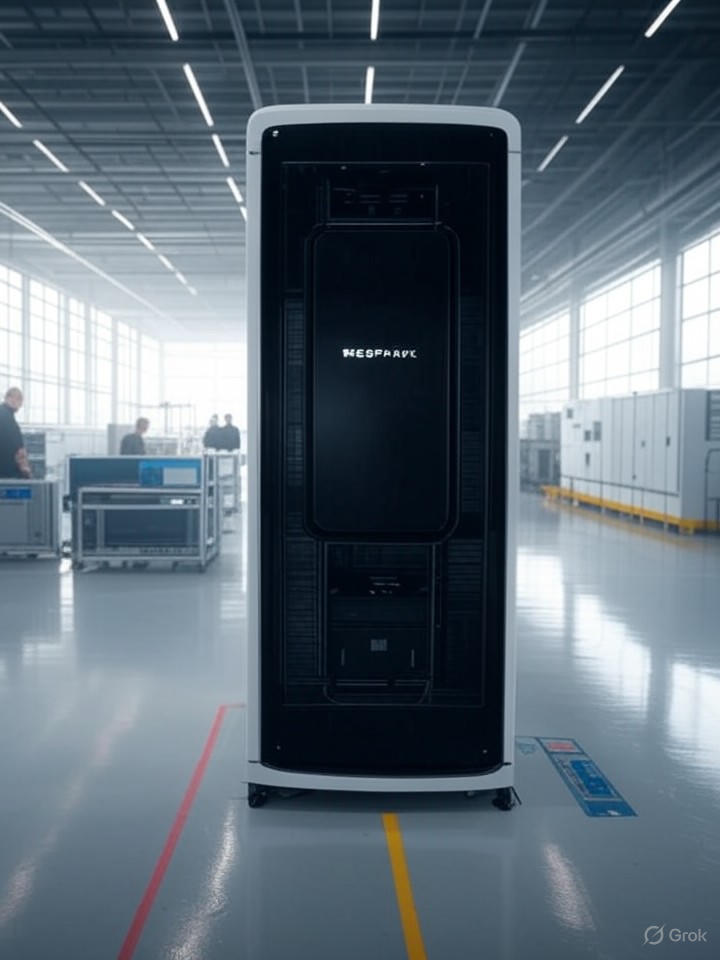In a significant move to bolster its supply chain amid escalating trade tensions, Tesla Inc. has inked a $4.3 billion agreement with South Korea’s LG Energy Solution Ltd. to procure lithium iron phosphate (LFP) battery cells for its energy storage products. The deal, which underscores Tesla’s strategic pivot away from heavy dependence on Chinese suppliers, involves cells produced at LGES’s facility in Michigan, according to details reported by Ars Technica. This partnership not only secures a steady supply for Tesla’s Megapack and Powerwall systems but also aligns with U.S. efforts to localize critical manufacturing amid tariffs on imported batteries.
The agreement comes at a time when Tesla is grappling with profitability pressures, as evidenced by its recent Q2 2025 earnings report showing declining vehicle sales and revenue from carbon credits. Industry insiders note that by sourcing domestically manufactured cells, Tesla can mitigate the impact of tariffs imposed on Chinese imports, which have risen sharply under current trade policies. LGES, a major player in the battery sector, will ramp up production at its Holland, Michigan plant to meet the demand, potentially creating jobs and stimulating the local economy.
Strategic Shift in Supply Chain Dynamics
This deal represents a broader trend among U.S. automakers and energy firms to diversify away from China-dominated supply chains, driven by geopolitical risks and economic incentives like the Inflation Reduction Act. Sources familiar with the matter, as cited in a Reuters exclusive, indicate that Tesla had been in talks with multiple suppliers, ultimately choosing LGES over China’s CATL due to cost efficiencies and tariff avoidance. The LFP cells, known for their safety and longevity, are particularly suited for stationary storage applications, where energy density is less critical than in electric vehicles.
Tesla’s energy storage business has been a bright spot amid automotive headwinds, with deployments surging in recent quarters. The company’s Megapack units, used in large-scale grid projects, rely on high volumes of these cells, and this supply deal could enable Tesla to scale production without the volatility of international shipping and tariffs. Analysts estimate that the $4.3 billion contract spans multiple years, providing LGES with a stable revenue stream while locking in prices for Tesla amid fluctuating raw material costs.
Implications for Battery Technology and Market Competition
From a technical standpoint, LFP batteries offer advantages in thermal stability and lower cobalt usage, making them an eco-friendly choice that aligns with Tesla’s sustainability goals. However, the shift to U.S.-made cells may involve initial hurdles, such as adapting supply logistics and ensuring quality consistency, as highlighted in discussions on Ars OpenForum. LGES’s Michigan facility, bolstered by federal subsidies, is expected to produce cells tailored to Tesla’s specifications, potentially fostering innovations in battery management systems.
Competitively, this agreement intensifies rivalry in the energy storage market, where players like Fluence Energy and Sonnen are vying for dominance. Tesla’s move could pressure Chinese suppliers to seek alternative markets or invest in U.S. operations, reshaping global trade flows. Moreover, as reported by BNN Bloomberg, the deal reflects Tesla’s broader strategy to integrate more North American content, qualifying for tax credits and enhancing its bargaining power with regulators.
Economic and Policy Ramifications
On the economic front, the partnership is poised to inject vitality into Michigan’s manufacturing sector, with LGES planning expansions that could add hundreds of jobs. This aligns with U.S. policy objectives to build resilient domestic industries, especially in clean energy technologies. Tesla, facing scrutiny over its China ties, benefits from the optics of this deal, potentially easing investor concerns amid a stock price that has fluctuated with earnings reports.
Looking ahead, industry experts anticipate that such agreements could accelerate the adoption of LFP technology in the West, reducing costs for consumers and utilities. Yet, challenges remain, including raw material sourcing and potential supply bottlenecks if demand outpaces production ramps. As Tesla navigates these dynamics, this $4.3 billion pact with LGES stands as a pivotal step in fortifying its position in the burgeoning energy storage arena, with ripple effects across the global battery ecosystem.




 WebProNews is an iEntry Publication
WebProNews is an iEntry Publication